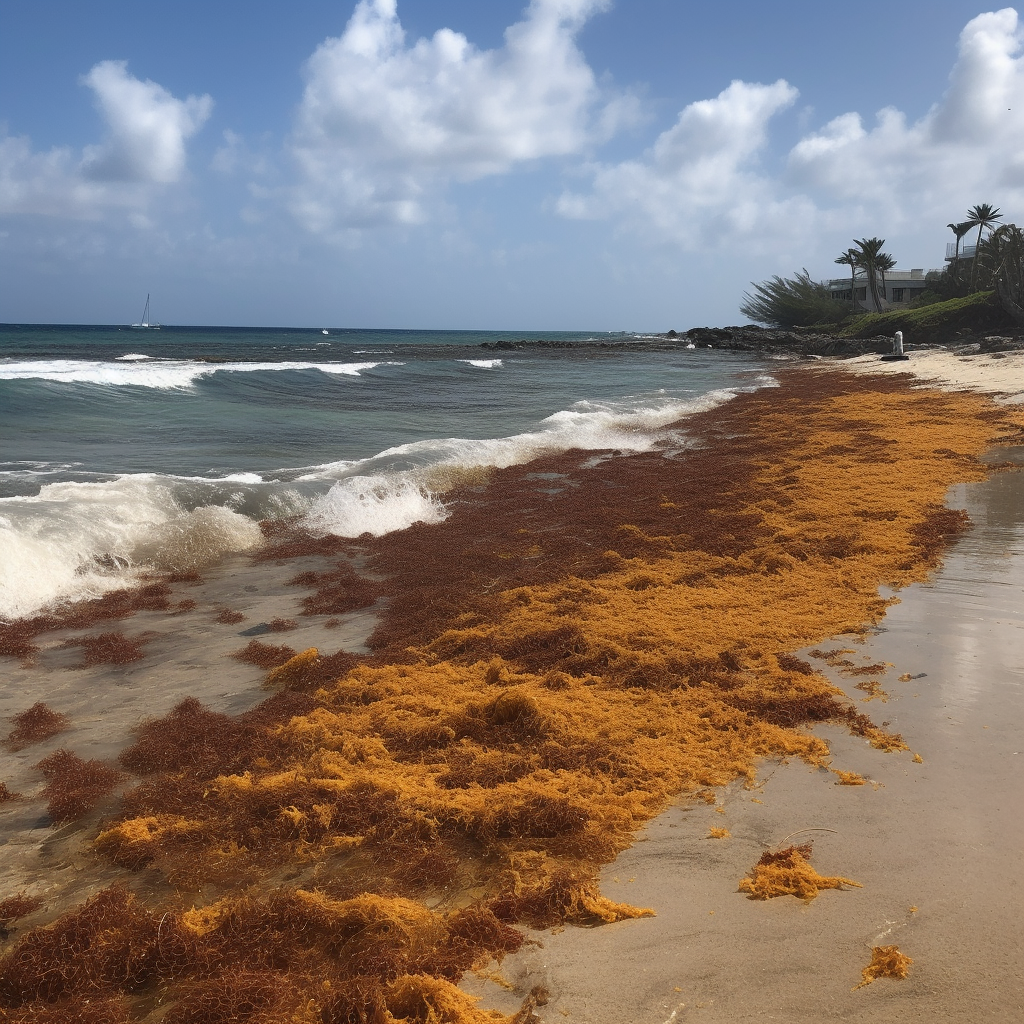March 28, 2023
The Impending Threat of the Massive Sargassum Belt to Florida, Caribbean, and Mexican Tourism Industry
Book a Demo
The Massive Sargassum Belt is Heading Towards Tourist Destinations in Florida, the Caribbean, and Mexico
Sargassum, a type of seaweed, is causing concern among the tourism industry in Florida, the Caribbean, and Mexico. The massive sargassum belt that has formed in the Atlantic Ocean is heading towards popular tourist destinations just before the tourist season. It has already started washing up on some beaches, forming piles almost a meter high on the Yucatán Peninsula in Mexico. The sargassum bloom could severely disrupt tourism if it reaches the Florida Keys, Yucatán Peninsula, and eastern Caribbean.
Sargassum is a brown seaweed that floats in the ocean and provides a habitat for ocean life such as turtles, crabs, and birds. However, when it approaches shore, it can disrupt local ecosystems and reduce fishing yields. The decomposing sargassum can emit a foul smell and release toxic gases like hydrogen sulfide and arsenic, causing health issues for those exposed.
This year’s sargassum bloom could be the largest ever recorded, potentially causing dangerous heaps and releasing toxic gases into the air. Scientists are still working to understand what has caused this year’s unusual bloom, but climate change and human waste are among the possible contributing factors.
Some cities in the Yucatán Peninsula are already preparing for up to 3 feet of sargassum buildup and installing anti-Sargassum networks to protect public areas. The Mexican government has allocated $2.7 million to deal with this problem, but it is unclear if this will be enough to address the issue if it spreads to other areas.
Tourism is a significant industry, especially in the Caribbean and Mexico, and a disruption like this can cause significant economic damage. The sargassum belt could potentially drive tourists away from the affected areas, leading to significant losses for local businesses and economies.
The massive sargassum belt heading towards popular tourist destinations is a serious concern for the tourism industry. The sargassum bloom could cause health issues, disrupt local ecosystems, reduce fishing yields, emit a foul smell, and release toxic gases. It is essential that governments allocate adequate resources to address the problem and protect public areas. Furthermore, the need to address the factors that cause this problem, such as climate change and human waste, must also be considered to prevent similar incidents in the future.



